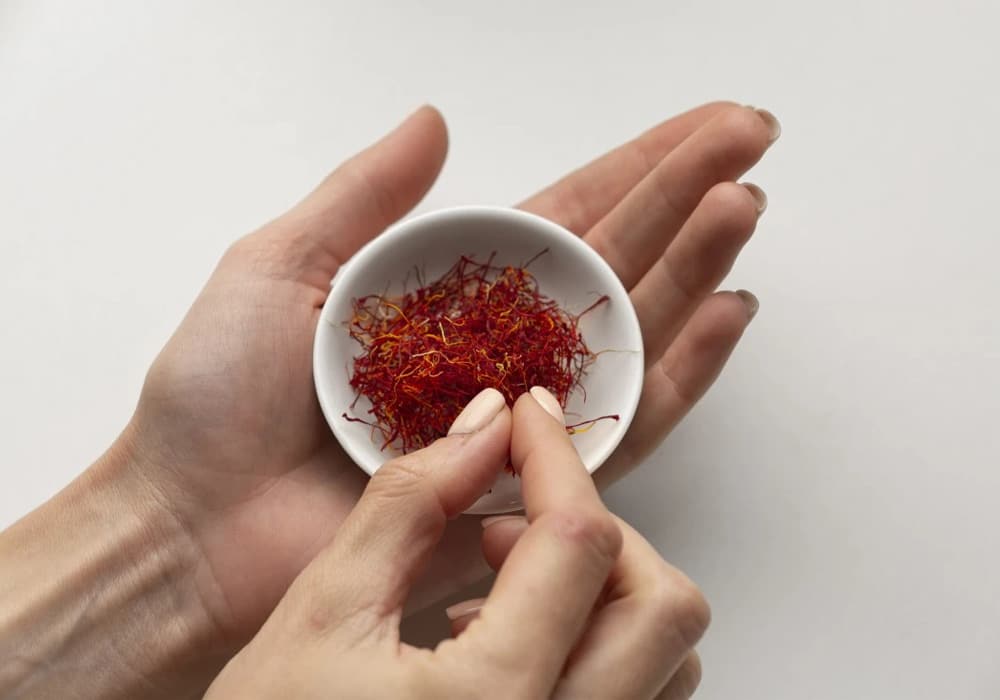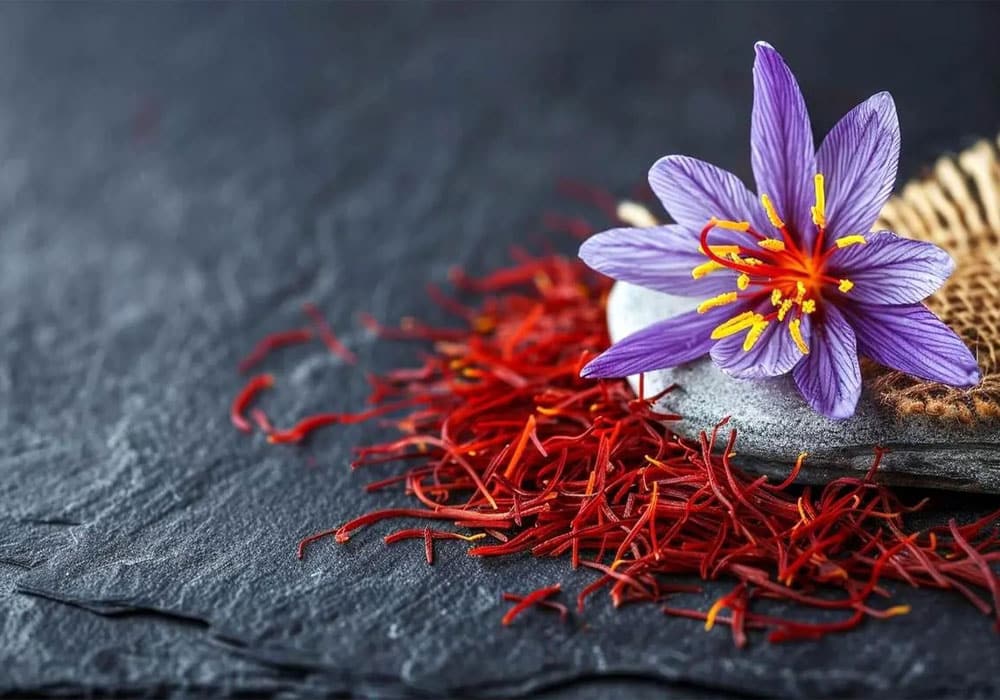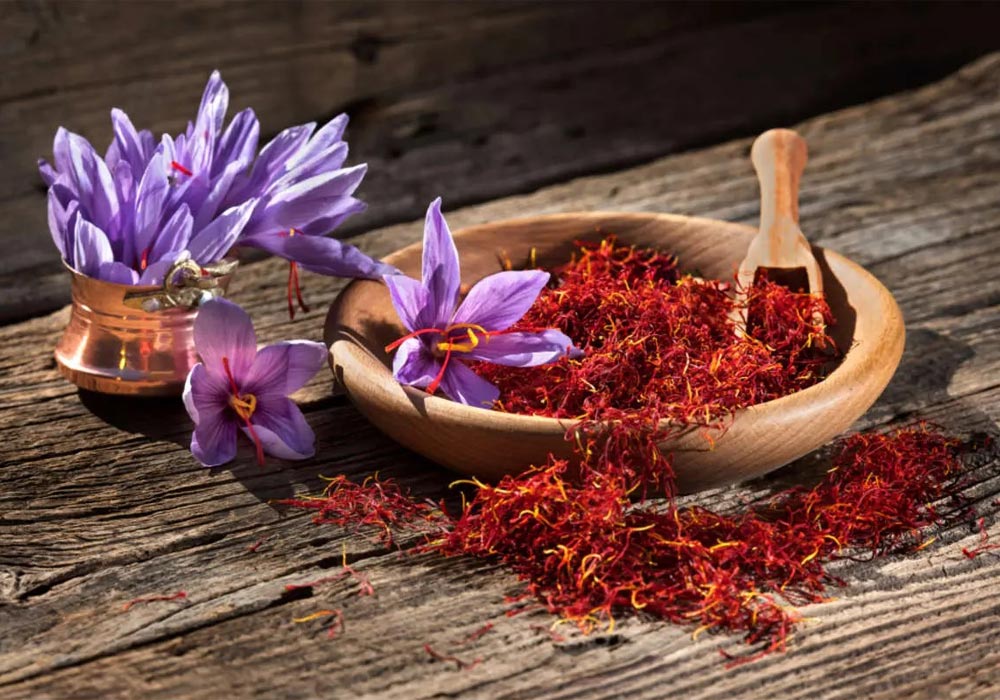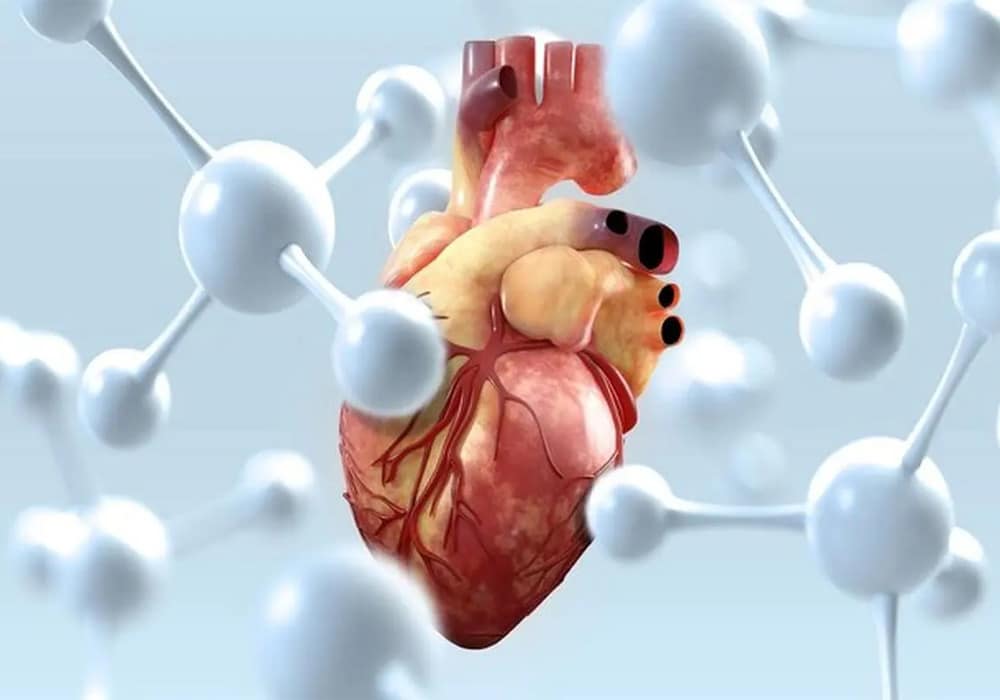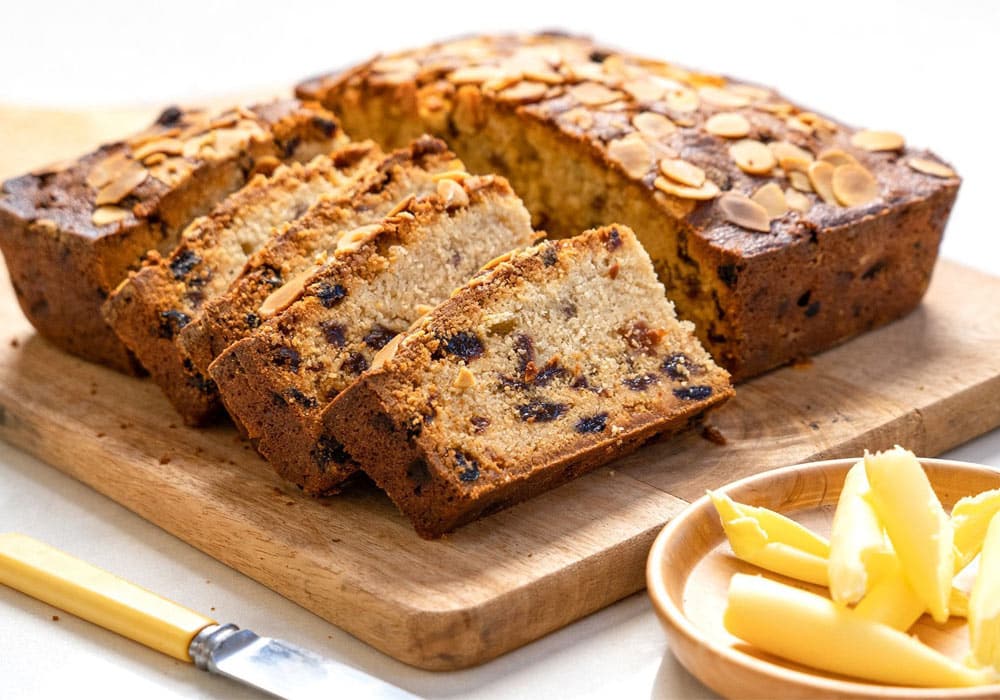Saffron, this beautiful and fragrant plant known as the “Red Gold,” has played a significant role in human life since ancient times. This expensive spice, derived from the Crocus sativus flower, is renowned not only for its exceptional taste and color but also for its numerous medicinal properties, earning a special place in the traditional medicine of various cultures. From Iran—the world’s largest producer of saffron—to India, China, Greece, and Egypt, people have long used this plant to treat a wide range of ailments. Saffron’s diverse benefits include enhancing mental well‑being, strengthening the immune system, reducing inflammation, and protecting cardiovascular health. A deeper understanding of these properties and the active compounds in saffron can help us fully utilize this natural blessing.
History of Saffron Use in Traditional Medicine
The use of saffron as a natural remedy dates back over three thousand years. Ancient texts from Egypt, Iran, Greece, and India indicate that saffron has long been valued as a treatment for various illnesses. In ancient Iran, renowned physicians like Avicenna (Ibn Sina) recommended saffron for treating respiratory issues, depression, menstrual pain, and even vision improvement. In traditional Indian (Ayurvedic) medicine, saffron was used to strengthen the heart, alleviate digestive disorders, and improve sleep quality. Ancient Greeks regarded saffron as both a calming agent and an anti‑inflammatory remedy. In addition to its therapeutic applications, saffron has held a prominent place in the culture and art of many societies.
Chemical Composition of Saffron
Saffron’s remarkable therapeutic effects are mainly attributed to its biologically active compounds. One of the most important is crocin, which provides saffron’s vivid yellow‑orange hue and possesses powerful antioxidant properties. Antioxidants help protect cells from damage caused by free radicals, thereby contributing to the prevention of chronic diseases such as cancer and heart disease. Safranal, the aromatic compound in saffron, plays a key role in its anti‑anxiety and antidepressant effects, while picrocrocin, the component responsible for its bitter taste, provides anti‑inflammatory and analgesic qualities. Additionally, saffron contains flavonoids and phenolic compounds, both of which support immune function and reduce inflammation. Together, these constituents transform saffron into a multifaceted natural remedy.
Medicinal Properties of Saffron in Traditional Medicine
Saffron has long been recognized as a vital medicinal plant in traditional healing systems. Across various cultures, this plant—with its active constituents and therapeutic effects—has been employed both to prevent and treat a number of health conditions. Its benefits extend beyond mental well‑being and inflammation reduction to positively influence vital systems such as the cardiovascular, cognitive, and gastrointestinal systems. In this section, we explore the comprehensive medicinal properties of saffron and its role in promoting overall human health.
Antidepressant and Mood‑Enhancing Effects
One of the most well‑known applications of saffron in traditional medicine is its role in alleviating depression. Depression is one of the most common mental health disorders, significantly affecting quality of life. Studies have shown that saffron consumption may help increase serotonin levels in the brain—a hormone crucial for mood regulation. In Iranian traditional medicine, saffron is used as a natural remedy to reduce anxiety, stress, and depression. Components like safranal, particularly, are recognized for reducing depressive symptoms, making saffron an attractive, natural alternative to conventional antidepressants.
Immune Boosting and Antioxidant Properties
The immune system is vital in combating diseases, and its enhancement has always been a priority in traditional medicine. Saffron, rich in antioxidants like crocin and flavonoids, helps counteract free radicals. These unstable molecules can damage DNA and body cells, contributing to chronic illnesses such as cancer, cardiovascular disease, and premature aging. Therefore, saffron’s natural antioxidant function strengthens the body’s defenses and improves immune system performance. Moreover, its anti‑inflammatory properties can help reduce chronic inflammation, a root cause of many diseases.
Anti‑Inflammatory Effects
Chronic inflammation can lead to numerous health issues, including arthritis, heart disease, and certain gastrointestinal disorders. In traditional medicine, saffron has been regarded as an effective agent for reducing inflammation. Components like crocin and picrocrocin can inhibit inflammatory molecules, and consumption of saffron—whether in tea or extract form—may help reduce symptoms such as joint swelling, stomach inflammation, and chronic pain. Its anti‑inflammatory capability also supports improved immune function and relief from muscular discomfort.
Cardiovascular Health
Cardiovascular wellness is one of the cornerstones of overall health, and saffron has traditionally been prescribed as a natural heart‑protecting remedy. It may help lower blood pressure, reduce LDL cholesterol buildup, and improve blood circulation, thanks to its antioxidant and anti‑inflammatory action. Regular saffron use in traditional medicine is linked to a lower risk of heart attack and cardiovascular disease, underlining its vital role in maintaining heart health.
Cognitive Enhancement
Another significant traditional use of saffron is in enhancing memory and cognitive function. As people age, cognitive performance may decline, and the risk of diseases such as Alzheimer’s increases. Saffron’s antioxidant and anti‑inflammatory compounds can help protect brain cells and improve cerebral blood flow. In Iranian traditional medicine, saffron is used to boost concentration, enhance memory, and reduce mental stress. Recent studies also suggest that saffron may slow the progression of Alzheimer’s disease.
Menstrual Regulation and Antispasmodic Effects
In women’s traditional medicine, saffron is valued for its ability to regulate menstrual cycles and reduce associated pain. Hormonal imbalances and stress can cause irregular periods and severe menstrual discomfort. Saffron’s calming and antispasmodic effects help relieve menstrual cramps and promote cycle regularity. This has made saffron a recommended herbal remedy in Iranian and Indian traditional medicine for improving women’s quality of life.
Gastrointestinal Support
Saffron is widely used in traditional systems for enhancing digestive health and function. Its active compounds can reduce gastric inflammation, alleviate ulcer pain, and enhance digestion. Saffron also helps diminish bloating and indigestion. Traditional medicine in countries like Iran, India, and China often prescribes saffron tea as a natural remedy for gastrointestinal wellness.
Anticancer Potential
Recent scientific research has revealed saffron’s potential in inhibiting the growth of cancer cells, particularly due to crocin’s impact on molecular mechanisms that regulate cell division. In traditional medicine, saffron has been valued for promoting cellular health and helping prevent chronic conditions such as cancer. This property has led to its recommendation as an adjunctive treatment alongside conventional therapies.
Analgesic and Relaxing Effects
In traditional healing practices, saffron is known as a potent natural analgesic. Its calming compounds can effectively reduce headaches, migraines, and muscular pain. Drinking saffron tea or using saffron extract may also relieve anxiety and stress—factors that often aggravate pain. These analgesic and relaxing properties make saffron a traditional recommendation for improving sleep quality and easing daily tension.
Skin and Hair Benefits
Thanks to its anti‑inflammatory and antioxidant nature, saffron has traditionally been esteemed for its benefits to skin and hair. Topical or oral application of saffron may reduce skin inflammation, like acne and eczema, while enhancing skin tone and repairing damage. For hair, saffron strengthens hair follicles and improves scalp circulation, encouraging better hair growth and vitality.
Saffron Applications Across Traditional Systems
Saffron’s uses vary significantly across traditional healing systems worldwide. In Iran, it is primarily utilized for mental wellness, menstrual regulation, and memory enhancement. In India, saffron supports heart health and relaxation. Chinese traditional medicine employs it to boost immunity and treat respiratory issues. In Europe, particularly in Greek and Roman traditions, saffron is appreciated for its anti‑inflammatory effects and general rejuvenating properties. These diverse applications highlight saffron’s wide-ranging healing potential across different cultural contexts.
Additional Notes on Saffron Consumption
While saffron offers numerous therapeutic benefits, safe and effective use requires mindful consumption. Proper dosage, awareness of possible side effects, and choosing the right form of saffron are essential considerations. In the following section, we examine these practical guidelines to ensure saffron is used both safely and beneficially.
Recommended Dosage
Saffron must be used with precision, as excessive intake may be toxic. Generally, a daily dose of 30 to 50 milligrams is considered safe and effective. Higher amounts can lead to symptoms such as nausea, dizziness, or vomiting. For extended use or higher dosages, consulting a traditional medicine practitioner or healthcare provider is strongly advised.
Side Effects and Precautions
Although largely safe, excessive saffron intake or consumption under certain conditions may cause adverse effects. Pregnant women should avoid high doses due to the risk of uterine contractions and potential miscarriage. Individuals with allergies to saffron or those on medication should consult a doctor before use. Adherence to appropriate dosage and professional guidance is key to safe utilization.
Forms of Consumption
Saffron is available in various forms: powder, extract, capsules, and tea (infusion). In traditional practices, saffron tea is often combined with other medicinal herbs to enhance its therapeutic effect. Extracts are used in specified doses for targeted treatments. The chosen form should align with the intended therapeutic purpose.
Guaranteed Quality and Exceptional Value from Tida Saffron
Tida Saffron, with years of experience in offering premium Iranian saffron, ensures that all its products meet the highest standards of purity, aroma, and color. Every batch undergoes rigorous laboratory testing and quality control to guarantee that customers receive 100% natural and high-grade saffron.
What truly sets Tida Saffron apart is its perfect balance between quality and affordability. While Iranian saffron price can vary widely depending on quality and sourcing, Tida offers some of the most competitive and fair rates on the market—without compromising on excellence. This means everyone can enjoy the incredible health benefits and rich flavor of saffron, backed by the assurance of authenticity.
Buying from Tida Saffron means investing in authentic Iranian saffron at a great price, delivering a premium experience with real medicinal value.
Conclusion
Saffron, with its remarkable history, unique aesthetic and flavor, and extensive medicinal virtues, continues to be revered in both traditional and modern contexts. Its benefits—ranging from mood enhancement and immune support to cardiovascular protection and cognitive preservation—underscore its significance as a holistic health ally. By understanding saffron’s active compounds and consuming it wisely, we can harness its profound healing power. Opting for high-quality sources like Tida Saffron ensures genuine benefits and supports safe, effective, and satisfying use of this extraordinary natural remedy.
also read


